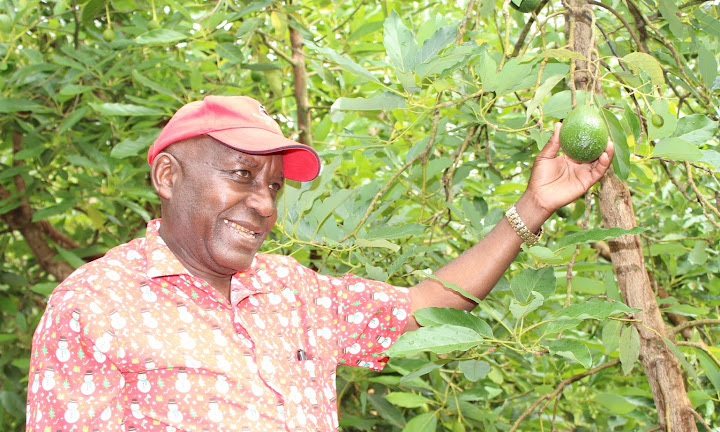SOURCE: The Star
Kenya topped Africa’s avocado exports last year and was among the world’s top 10 producers, with Murang’a leading with 31 percent of total production.
However, the country only exported 10 percent of its total avocado production an indicator that the market potential is not fully exploited.
Horticulture Crops Directorate (HCD) Director Benjamin Tito said that Murang’a was followed closely by Kiambu, Nakuru, Kisii, Nyamira, Meru and Bomet counties.
Tito also said that newcomers Nyeri, Laikipia, Elgeyo Marakwet and Uasin Gishu have nearly doubled the area under production and are counties to watch in the next two years when their avocado crops comes mature.
He said between January to November this year, avocado farmers earned Sh14.48 billion compared to Sh14.41 billion over a similar period last year.
“Volumes of the highly sought commodity in the local and international market went up to 84.5 million kilos from 70.3 million kilograms recorded between January-November 2020,” he said.
He said the directorate in conjunction with other value chain players have closed the current season’s avocado harvesting starting 15th November to early January 2022.
This, he said is aimed at preventing export of immature avocados which he said has negatively affected the image of the country in the overseas market.
It will also help in interfering with the cropping cycle of trees thereby reducing projected volumes in subsequent harvests.
“The closure of the season was necessitated by a surveillance that was conducted during the month of September, 2021 in major avocado production agro-ecological zones to ascertain the volumes of avocado fruits that can be exported by either sea or air,” he stated.
He said the review to open avocado exports will be done on the 15th of January 2022 with allowable off season sizes for varieties of Hass and Fuerte limited to a maximum size code of 22 and 24 respectively.
For the Jumbo variety, the director said the size will be limited to minimum size of code 20 which is 184Kg to ensure maturity is observed
Tito said overall the Horticulture sector has remained resilient over the past one year and is projected to improve but warned that this can only work with stringent self-regulation and discipline by all the players by observing export terms terms as stipulated in the code of practice for horticulture.
He said revenue from horticulture exports in 2021 from January to November rose from Sh136.7 billion in 2020 to Sh145.4 billion in 2021 a six percent increase.
This was driven by increased volumes despite the average export prices achieved being low compared to those achieved in 2020. The total volume and value of horticulture exports reached 313 million kilos with a value of Sh150 billion.
The total volume of exports increased by 85 million kilos representing a 30 percent rise that was attributed to increased demand especially flowers and vegetables.
The director said the demand for the fresh produce has started picking up after most of the export destinations relaxed Covid-19 pandemic protocols.
“During the review period, cut flowers shipped to the lucrative European market reached Sh101 billion followed by vegetables at Sh26.8 billion, fruits returned Sh17.5 billion,” he said.
Vegetable exports volumes increased from 34.38 million kilos in 2020 to 65.13 million kilos in 2021 and the value also increased from Sh13.9 billion 2020 to Sh23.78 billion in 2021 with the United Kingdom, Holland and France still continuing to be leading export destinations, he added
“The volume of fruits exported increased from 99.5 million kilos in 2020 to 110.5 million kilos in 2021 representing an 11 percent rise as compared to the same period in 2020,” the Director said, but noted that the value however dropped from Sh17.75 billion to Sh 17.57 billion in 2021 representing a slight decrease of 1 percent.
On resumption of mango exports to the EU market after a seven-year self-ban, Tito stated that all logistics have been worked out and soon the exporters will start shipping the fruit after EU approval allowing exports of hot water treated mango.
“In July Kenya exported the first hot water treated mango consignment successfully to Italy and it was found to be compliant in both phytosanitary and quality aspects,” Tito noted
The agriculture sector is the mainstay of Kenya’s economy contributing 29.3 percent to the GDP and accounting for 80 percent of national employment. According to the Kenya Economic Survey 2020 the leading sub-sectors in 2020 were dairy, horticulture and tea respectively.

